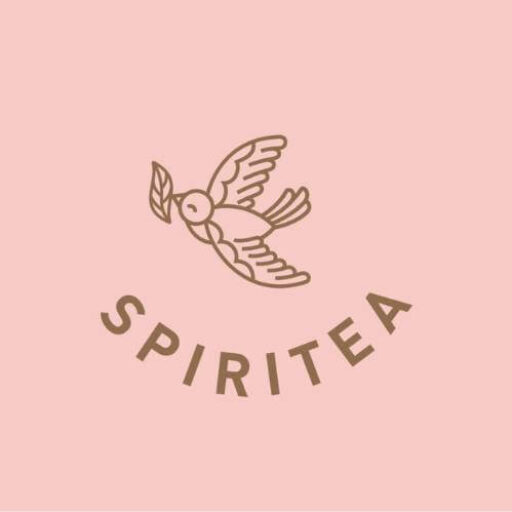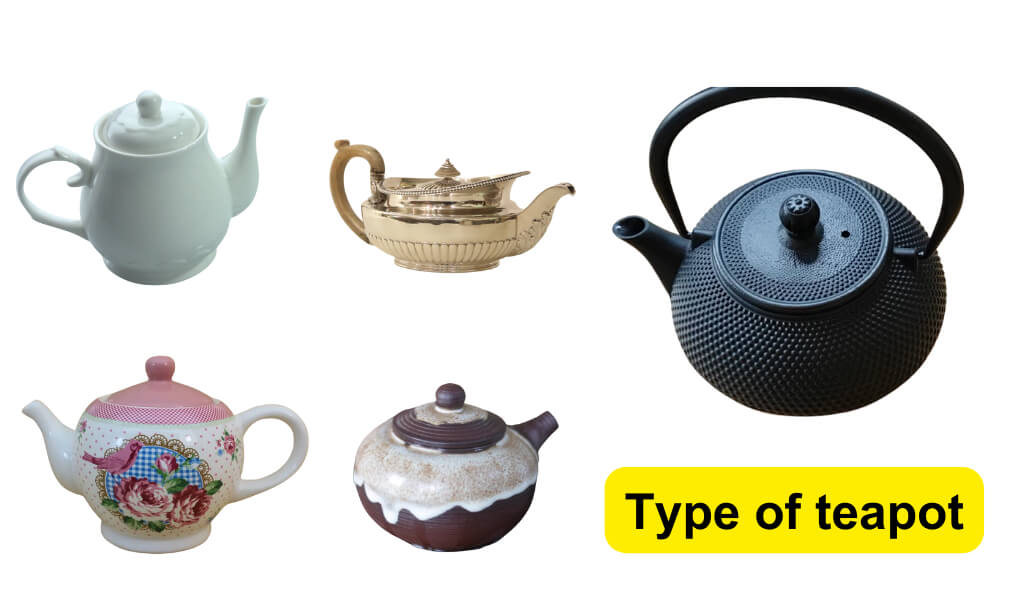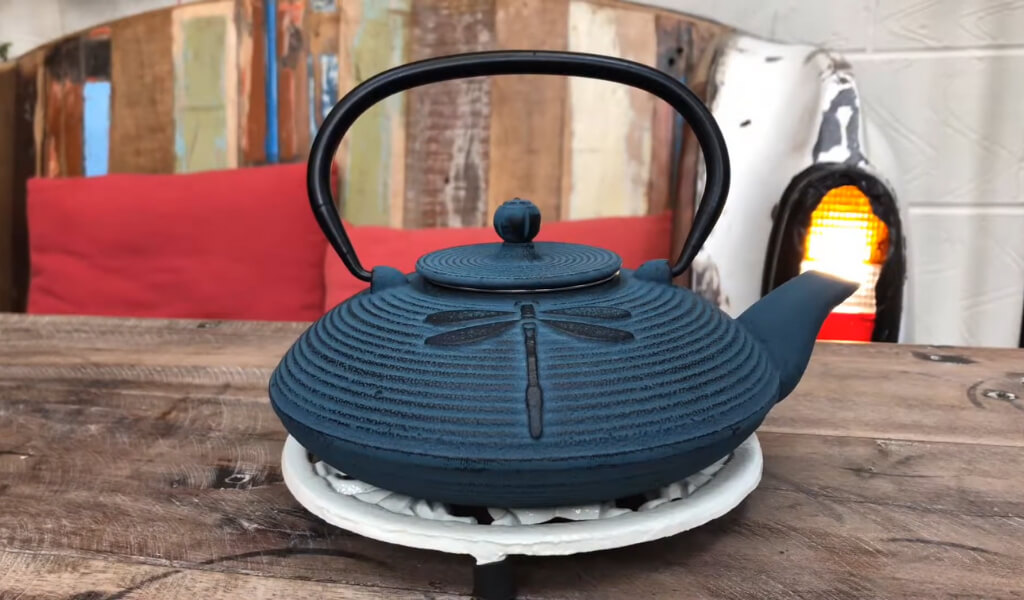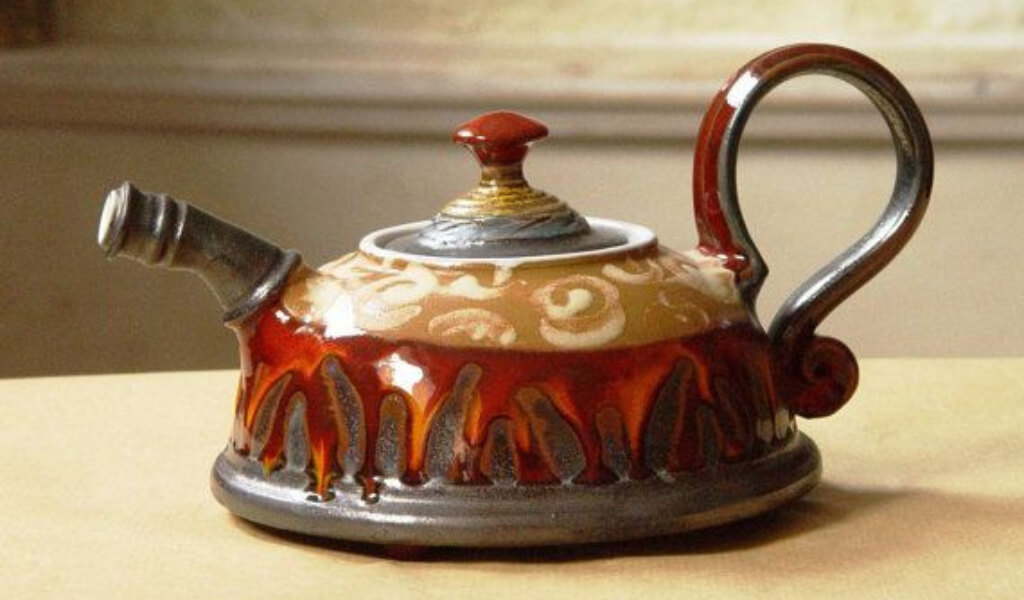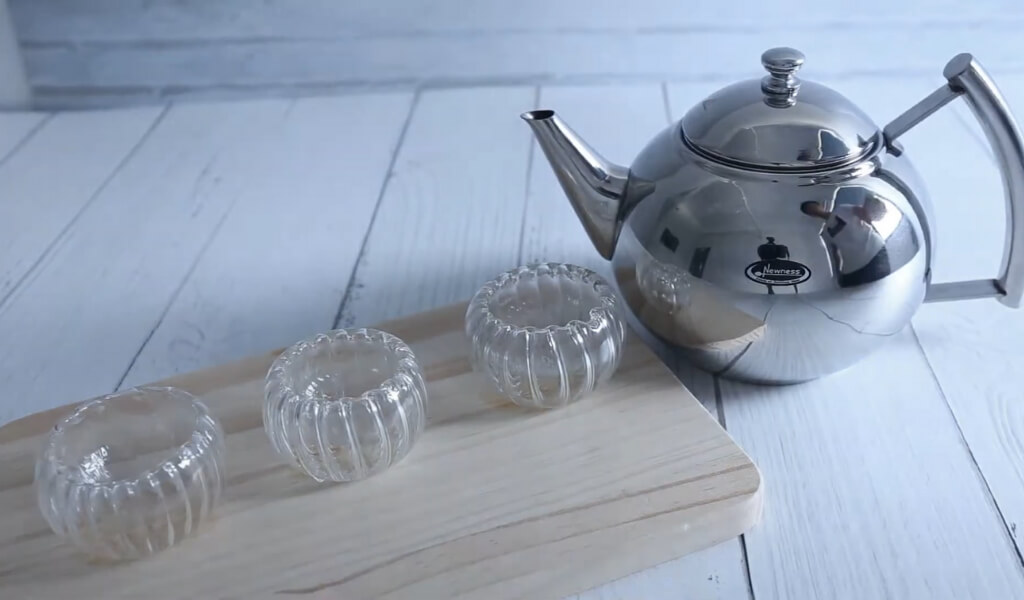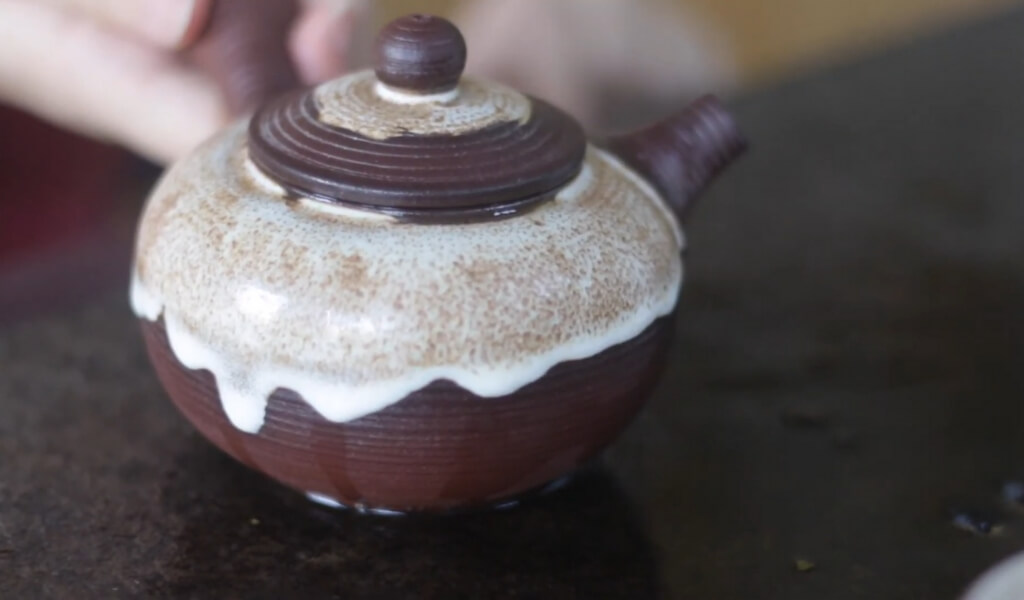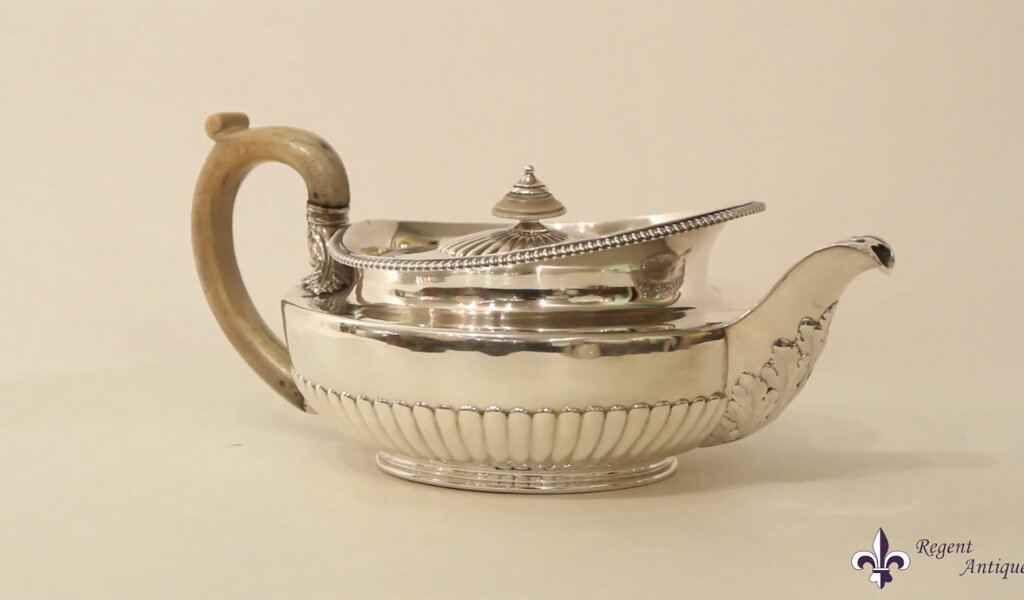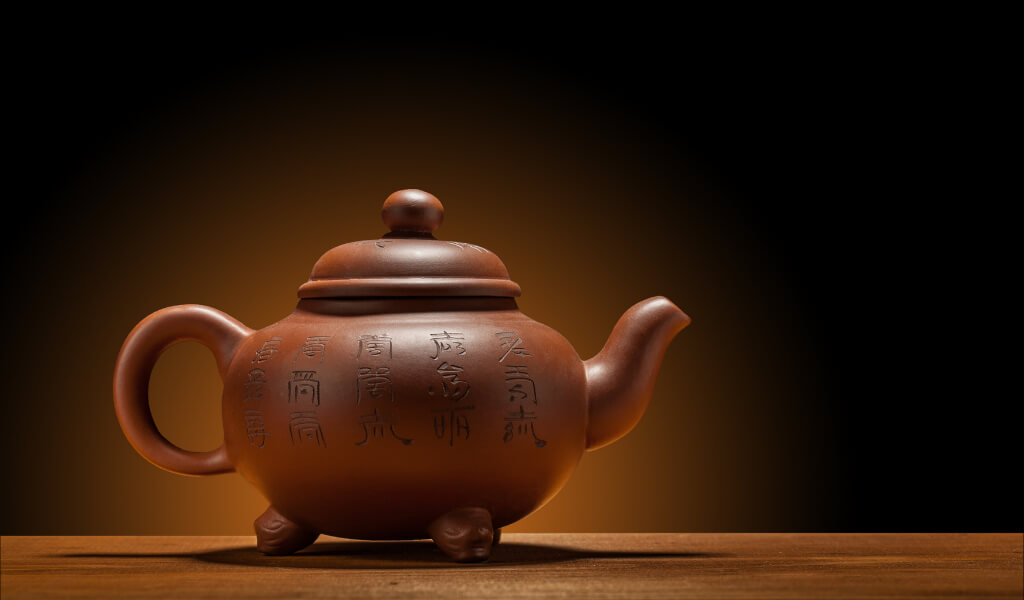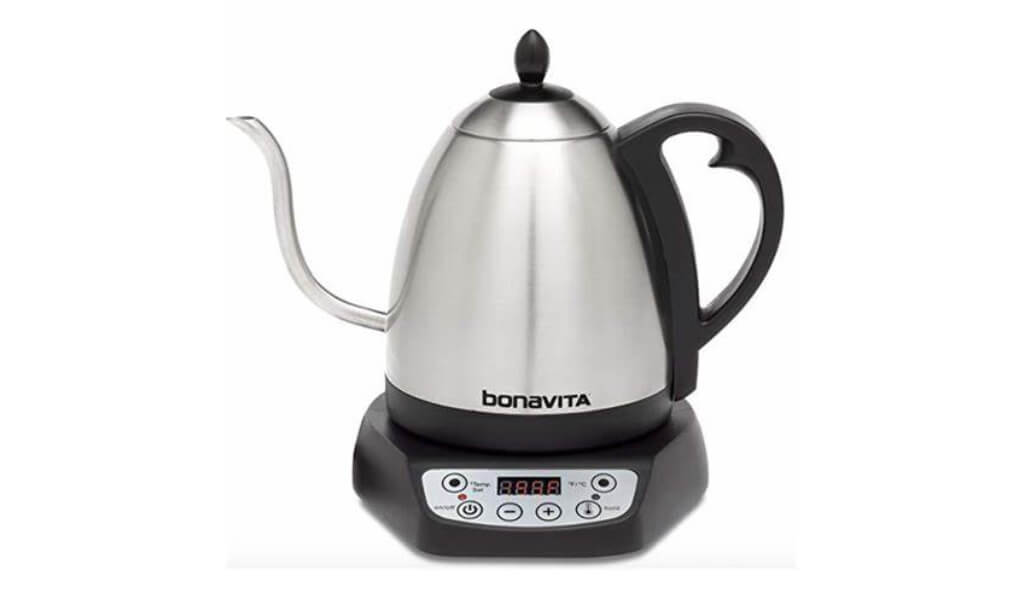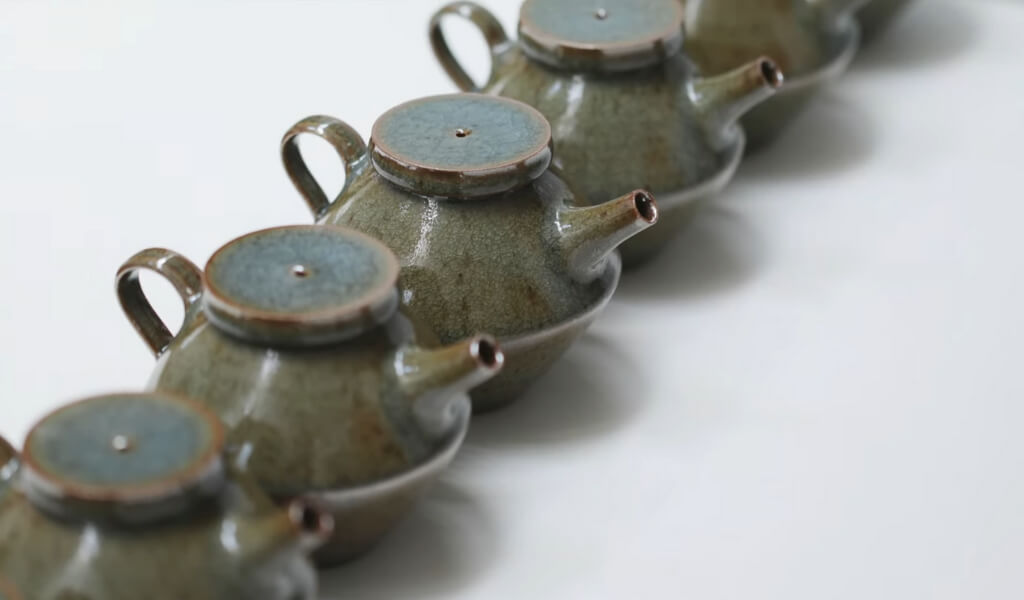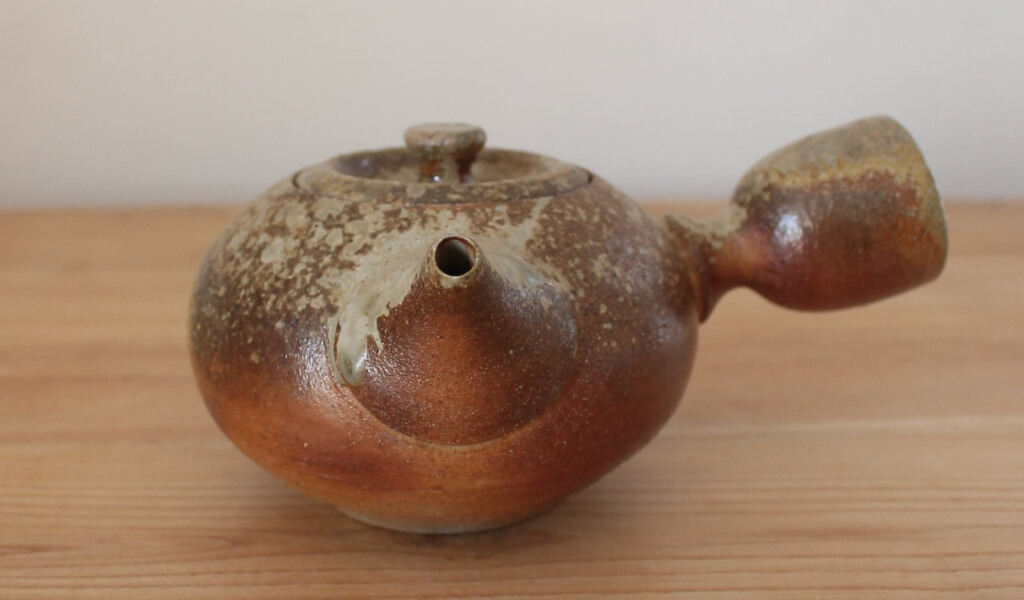Diving into the world of tea is a joy, and one of my favorite parts is discovering all the different types of Teapots.
Each type, be it glass, cast iron, ceramic, or stainless steel, has its personality and uniquely affects the taste of your tea.
Come along with me as we explore this exciting realm, and I’ll help you find the perfect teapot to make your tea taste even better!
Read More: Top 8 best Teapots you must have
Does the type of teapot you use affect taste?
Yes, the teapot you pick can change how your tea tastes, and here’s why.
Some materials, such as glass and non-porous ceramics, won’t impact the flavor of your tea; they simply allow it to shine through.
However, others, like cast iron, stainless steel, and porous ceramics, can impart their own nuances to your brew. Here’s the important part: quality matters. A budget-friendly, poorly crafted teapot may not only influence the taste of your tea but could also deteriorate over time. Therefore, investing a bit more in high-quality teaware is always a wise choice.
What about porous ceramics? They’re unique, acting as the memory foam of teapots, preserving the essence of your brewed tea. If you enjoy both robust pu’erh dark tea and delicate silver needle white tea, it’s advisable to use distinct teapots for each. You wouldn’t want the bold pu’erh flavor to overwhelm the subtlety of your white tea, right?
So, the kind of teapot you choose does make a difference. It’s all about matching your tea with the right ‘partner’ teapot to get the best flavour dance in your cup.
What are some types of Tea Pots?
Each has distinct appeal and quirks in the fascinating universe of teapots.
| Teapot Type | Features and Characteristics | Best Use |
| Cast Iron Teapots | Durable, eye-catching, often enamel-coated to prevent rust. |
Ideal for brewing various teas, adds charm.
|
| Glass Teapots | Clear design for tea visibility, delicate (choose borosilicate glass). |
Great for blooming teas, oolongs, greens.
|
| Ceramic Teapots | Crafted from clay, various types (Yixing, stoneware, porcelain). |
Suitable for specific tea types, versatile.
|
| Stainless Steel | Extremely durable, resistant to rust and corrosion. |
Robust, easy to maintain, but watch for heat.
|
| Porcelain Teapots | Aesthetic and durable, non-porous, retains heat well. |
Ideal for green and white teas, easy clean.
|
| Silver Teapots | Eye-catching, expensive, used for special occasions. | Reserved for special occasions. |
| Clay & Stoneware | Traditional, often Asian-origin, rich history, unique aesthetics. |
For traditional tea ceremonies, heritage.
|
| Electric Teapots | Quick heating, modern convenience, suitable for busy tea lovers. |
Convenient for on-the-go tea preparation.
|
Cast iron teapots
Cast iron teapots, or ‘tetsubin’ as they’re called in Japan, are durable and eye-catching, making them a staple in cafes and restaurants. Their history spans centuries, originally used to boil water and enhance tea flavor. Today’s versions have an enamel coating, which prevents rust and makes them suitable for brewing tea.
You can choose from popular options like the small Old Dutch Mini Cast-Iron Tokyo Teapot or the charming floral patterns of Primula. These top-quality teapots typically come with bamboo handles and a convenient short spout for pouring. Most of them also come equipped with a stainless steel infuser for loose leaf tea.
However, keep in mind that if your teapot is made of pure cast iron without enamel, it’s recommended to use it exclusively for one type of tea. Cast iron teapots carry a sense of tradition and charm, enhancing the character of your tea moments with a unique touch.
Glass teapots
Starting with glass teapots, these are a practical choice for daily tea making. Their clear design lets you see tea leaves as they brew, which is always a fun show. Brands like Hario ChaCha Kyusu Maru and Willow & Everett make some excellent ones.
I’ve got a special glass teapot I picked up on a trip to China last July. It’s a great teapot for any kind of tea, but it stands out when making blooming or flowering teas.
These teapots come in different shapes and sizes, and some have built-in filters. I like to use them for brewing oolongs like Ti Kwan Yin and green teas like Dragon Well.
However, glass teapots can be delicate, so it’s best to choose ones made of borosilicate glass because it’s more durable. Find a teapot with a stainless steel bottom to heat your tea on the stove. They’re easy to clean since you can put them in the dishwasher. So, while glass teapots need some care, they’re a great addition to any tea set.
Ceramic teapots
Ceramic teapots, drawing from rich European and Asian traditions, are crafted from clay fired at high temperatures, which increases their durability and gives them a glass-like finish. These teapots come in various types, each with their unique charm.
Consider Yixing teapots, renowned for their purple clay material, which is porous and ideal for steeping oolong and raw pu’erh teas. I recall a spring tea session with my Yixing teapot, where the room was filled with the rich scent of oolong. However, it’s crucial to note that these teapots should be exclusively dedicated to one type of tea to avoid flavor absorption over time.
Stoneware, another type of ceramic, is non-porous, versatile, and perfect for brewing various types of tea. Porcelain, on the other hand, is delicate and sophisticated, demanding careful handling.
Ceramic teapots come in various colours and styles, offering tea time a fun, whimsical touch. They’re also quite affordable and easy to find. Truly, these teapots are like faithful friends, enhancing your tea experience with every brew.
Read More:
- How do you make tea with teabags in a Teapot?
- Can you make coffee with a tea infuser?
- How to clean a Teapot – Videos and detailed illustrations
- How To Remove Tea Stains? Videos and images with detailed instructions
Stainless steel teapots
Stainless steel teapots are the tough cookies of the teapot world, boasting excellent durability and heat retention. They’re the current choice, and as I learned after my glass teapot from China met an unfortunate end, they’re almost unbreakable.
A stainless steel teapot is rust-resistant and can handle boiling water and occasional drops. But beware of hot handles due to its great heat conductivity. To avoid singed fingers, use a cloth or mitts.
However, keep in mind that stainless steel may release small amounts of chromium or nickel during brewing, unlike glass, especially borosilicate, which won’t release any toxins or metals.
However, these teapots are a breeze to maintain, requiring little effort to keep them looking and performing at their best. Easy to clean and pocket-friendly, these teapots are a great pick if you’re after a low-maintenance option.
With their sleek look and robust build, stainless steel teapots are a stellar choice for tea lovers. But as always, the best teapot is a matter of personal preference – beauty, durability, and function all play their part.
Porcelain Teapot
Ah, porcelain teapots are not just a tool for tea but a work of art. Constructed from kaolin and petuntse, these teapots are fired in a kiln at high temperatures, making them hard and remarkably durable. My mum gifted me a gorgeous one last Christmas in 2022, a memory that makes each brew even more special.
Aside from their stunning designs, porcelain teapots come with practical benefits too. Being non-porous, they hold heat exceptionally well, making them the perfect choice for green and white teas that require consistent temperature. The ease of cleaning is another plus – making your post-tea ritual a breeze.
Regarding popular porcelain teapots, the Lenox Butterfly Meadow and the Royal Albert Old Country Roses come to mind. These teapots are not just functional but truly elegant pieces that add a touch of class to any tea session.
So, if you appreciate aesthetics and function, a porcelain teapot is the perfect match for you. And with each sip, you’d not just taste the tea but also a touch of elegance.
Silver Teapot
The silver teapot is very eye-catching. So these are very expensive. These teapots are used on special occasions.
Clay and stoneware teapots
Clay and stoneware teapots have a sense of antiquity and tradition. I first stumbled upon these teapots at my friend Henry’s house, and the aesthetic appealed to me instantly.
These teapots originate from Asia’s quarries, echoing centuries of tea brewing history. The clay’s colour varies based on its source, adding a tale to every teapot. As a tea lover, appreciating these details can enrich the tea-drinking experience.
These teapots are not just about brewing but also deeply embedded in traditional tea ceremonies. So, if you’re a traditional tea enthusiast, a clay or stoneware teapot could offer an intriguing journey into the roots of tea.
Thus, clay and stoneware teapots are more than just teapots – they’re the narrators of the tea story, bringing a unique blend of heritage and artistry to your tea sessions.
Electric teapots
Electric teapots mix old traditions with new tech. With a quick heating element, they make brewing tea easy and fast. Electric teapots offer a modern tea-making approach, ideal for those who are always on the move. It’s the perfect blend of past and present, ideal for busy tea lovers.
Chinese Tea Pot
Steeped in cultural heritage, Chinese teapots, primarily made from the special Yixing clay sourced from Jiangsu Province, add a unique dimension to tea brewing. These vessels, designed to optimise the flavours of delicate green, white, and oolong teas, are similar to how my former China Glass teapot would allow tea leaves to unfurl beautifully.
The lack of glaze on these teapots allows them to retain tea oils, subtly enhancing the flavor over time – a process quite akin to the ageing of fine wine. Their petite size, practical for portability, is ideal for temperature control, making them a favourite among busy tea connoisseurs in the bustling streets of Shanghai or Beijing.
What sets these Yixing teapots apart is the firing process. Much like the celebrated ceramic traditions in Jingdezhen, this process gives them their characteristic earthy tones and durability. The esteemed Zhuni teapots, crafted from rare clay, epitomizes this craft.
These teapots shine when brewing a single type of tea, an art form I had the chance to appreciate during my travels through the verdant tea gardens of Hangzhou. This unique characteristic enables the tea to interact with the clay, creating a symphony of flavours that’s a testament to the rich legacy of Chinese tea culture.
Japanese Tea Pot
Hailing from Japan, the “Kyusu” teapot is an emblem of the country’s tea culture, specifically tailored for brewing green tea. As a unique feature, it flaunts a side handle, creatively positioned at a right angle to the spout.
Pouring tea becomes an elegant act with the Kyusu, as one gently holds the handle while securing the lid with a thumb, in the same manner, that one might pour sake from a tokkuri.
If we move to the “Uwade Kyusu,” we notice a shift in design. Here, the handle perches atop the teapot, possibly crafted from bamboo, plastic, or rattan if it is porcelain-made. This top-handle style finds favor among left-handed tea enthusiasts.
The “Ushirode Kyusu,” on the other hand, mirrors the classical Chinese teapot design, with the handle situated directly opposite the spout. This style is typically associated with brewing Chinese and British teas, quite a departure from the traditional Japanese green tea ceremony.
Aside from these, the world of Japanese teapots offers even more diversity. The “Tetsubin” is a cast-iron teapot boasting an enamel coating reminiscent of the Chinese cast-iron teapot I mentioned earlier.
Then we have the “Houben,” handleless and ideally suited for high-quality teas, and the “Shiboridashi,” recognised by its squatter shape, crescent moon-shaped spout, and filter-free design.
These teapots, primarily composed of clay, porcelain, or glass, each serve a unique purpose, capturing the essence of Japanese tea-drinking customs.
How to choose a perfect teapot
In my journey to brew the perfect cup of tea, I’ve found that it boils down to three main factors: the room for the tea leaves to blossom, the infuser’s quality, and the teapot’s material.
Firstly, I cannot stress enough the importance of a roomy teapot chamber. It should provide ample space for the tea leaves to unfurl and the water to circulate. This space allows for a well-steeped, flavorful tea, much like what I experienced with my Chinese and Japanese teapots.
Next comes the infuser. In my experience, larger is always better for infuser baskets. This size promotes optimal extraction of flavors. I’ve found ceramic or stainless-steel infusers to be the most durable and dishwasher-safe.
The world of tea infusers is broadly divided into balls and baskets. Although ball infusers are common, they don’t give much space for leaves to unfurl. So, I prefer basket infusers from my Yixing clay teapot to my modern electric kettle.
Lastly, the teapot material makes all the difference in heat retention, flavor, and longevity. I’ve had the pleasure of brewing tea in a variety of materials. While ceramic teapots like my Butterfly Meadow Teapot or my Stoneware kettle are popular for their affordability and design, they compete with glass teapots, which, though less efficient in heat retention, offer a visually pleasing brewing process.
But for a robust and visually appealing option, nothing beats a cast iron teapot with an enamel coating, reminiscent of my Japanese Tetsubin.
Which size is suitable for you?
When selecting the perfect teapot, size is a crucial aspect to consider. It primarily depends on the quantity of tea you plan to brew and the type of tea you favour.
If you’re a fan of flavoured or traditional blends like Vanilla Black or Earl Grey, or you lean towards herbal teas such as Chamomile Lavender, a regular glazed or glass teapot with a capacity of 250-500ml serves ideally for 1-2 people. This size recommendation brings to mind my previous experiences with porcelain and ceramic teapots, which perfectly fit the bill for these teas.
Should you have a penchant for Japanese teas, a 250ml Japanese side-handle kyusu, similar to the ones I’ve used, is an excellent choice for serving 1-2 people.
If, however, you find yourself drawn to the wide range of Chinese teas, a Chinese gaiwan teapot is the way to go. A size of 120-150ml works well for 1-4 people, depending on the size of your tea cups. My personal Yixing clay teapot falls into this category.
The ideal teapot size is determined by the type and quantity of tea you typically brew. Remember, a perfectly sized teapot is key to a delightful tea-drinking experience.
Should you consider a teapot to come with a strainer?
Determining the best teapot size is largely about the kind of filter it features since it’s closely linked to the type of tea you’ll be brewing.
Some teapots come equipped with built-in metal or stainless steel filters. These work best for teas that result in small particles during brewing, but remember that they can be tricky to clean. If you’re an enthusiast of loose-leaf teas with larger leaves, you’ll find teapots with interior hole filters, akin to my cherished Chinese clay teapot, to be most suitable.
Others have removable metal or ceramic filters, which typically handle almost any kind of tea, even finely cut ones like rooibos. This reminds me of the stainless steel teapot I once purchased after my China glass teapot broke; it had a removable metal mesh filter that was quite versatile.
End, your specific tea preferences determine the ideal teapot size and type. Do you prefer larger loose leaves or enjoy finely cut blends? Your answer will guide you to your perfect teapot companion.
A few interesting things
What is a Teapot?
A teapot is a vessel, distinct from a kettle, crafted for steeping tea leaves in hot water. Never confuse a teapot with a kettle; you don’t want to boil water or steep tea in a kettle!
The Teapot Structure
The design of a teapot is straightforward: it features an opening with a lid for adding tea leaves and hot water, a handle for holding, and a spout for pouring your freshly brewed tea. Some teapots even come equipped with an air hole in the lid to prevent splashback while pouring. And, if you like your tea to stay hot for longer, a thermally insulating cover, known as a tea cozy, could be your teapot’s perfect companion.
The Teapot History
The invention of the teapot can be traced back to China’s Yuan Dynasty around 1500. Given China’s long-standing tradition of regular tea drinking, it was a logical progression from ceramic kettles and wine pots. Hence, China is the birthplace of most teapots we use today.
Material Concerin Teapots
When choosing your ideal teapot, material and design are key considerations. Traditionally in China, clay was a favoured material since it absorbs the flavour from previous brews, enhancing the taste of later ones.
Glass teapots, ceramic glass teapots, cast iron teapots, and even silver teapots each come with their unique benefits and characteristics.
Ceramic vs Porcelain Teapots
While porcelain is a type of ceramic, it’s typically more delicate, thin, and often translucent, perfect for a sophisticated tea experience. However, avoid using boiling water as porcelain is prone to cracking. Chinese Taiwan and Japanese kyusu, two popular types of teapots, can be crafted from various materials, each bringing a unique brewing experience.
Stainless Steel vs Ceramic Teapots
For passionate tea drinkers, choosing between stainless steel and ceramic teapots often boils to aesthetics and taste. Ceramic teapots offer a good visual and flavorful brew, while stainless steel teapots can be practical, especially when brewing a large quantity of tea, as they help to retain heat for longer.
Thanks for SpiriteaDrinks.com
FAQs
What type of teapot do the English use?
The English often use porcelain or bone china teapots, known for their exquisite designs and perfect heat retention, ideal for brewing classic black teas like Earl Grey and English Breakfast.
What are the 4 parts of a teapot?
A standard teapot typically consists of four main parts: the pot itself (the body), a lid, a spout for pouring, and a handle for safe handling during the pour. Some also include an infuser or strainer.
What type of teapot holds heat best?
Cast iron teapots are known to retain heat best due to the properties of the metal, keeping your tea warm for longer periods. Often lined with enamel, these teapots add a rustic charm to your tea ceremony.
What is a Japanese teapot?
A Japanese teapot, known as a kyusu, is a traditional teapot used primarily for brewing green tea. It’s distinct for its side handle design, allowing for easy pouring while preserving the tea’s delicate flavors.
What is the difference between Japanese teapot and Chinese teapot?
The key difference lies in design and function. Japanese teapots (kyusu) are often small, designed for brewing green tea, and feature a side handle. In contrast, Chinese teapots, made from materials like Yixing clay, are used for various teas and are admired for their ability to enhance tea flavours over time.
What are Russian teapots called?
In Russia, teapots are a unique device called a “Samovar.” This traditional Russian teapot, typically crafted from metal, is used for boiling water and often has a separate teapot perched on top.
What is a Moroccan teapot called?
The traditional Moroccan teapot is known as a “berrad.” It’s primarily used for preparing and serving Moroccan mint tea, a staple in the nation’s culture. The berrad’s intricate silver design often makes it a stunning centrepiece during tea time.
What is the world’s most famous teapot?
Arguably, the most famous teapot is the Yixing teapot from China. These teapots are handcrafted from unique Yixing clay and are renowned for their ability to enhance the flavor and aroma of tea over time.
What are the famous Chinese teapots?
Famous Chinese teapots include Yixing teapots and gaiwans. Yixing teapots, known for their mineral-rich clay, improve tea flavour. On the other hand, gaiwans, typically made from porcelain, are appreciated for their versatility and simplicity.
Why are Japanese teapots so small?
Japanese teapots, or kyusu, are small to cater to the Japanese tea ceremony’s intimate nature. The small size allows for better control of temperature and brewing time, crucial for bringing out the subtle nuances in delicate green teas.
Why are Zisha teapots so expensive?
Zisha teapots, a type of Yixing teapot, are costly due to the rare, high-quality purple clay used in their creation. Handcrafted by skilled artisans, these teapots are also prized for their unique ability to enhance tea flavors over time.
What is the rarest teapot?
Among the rarest teapots are antique Yixing teapots from China and vintage silver teapots from the Victorian era. Their rarity, craftsmanship, and historical significance often result in their high value.
Are metal teapots better?
Metal teapots, particularly those made from stainless steel, are durable, easy to clean, and excellent at heat retention. While they might not contribute to the flavor of the tea like clay or ceramic teapots, they’re a practical choice for brewing larger quantities of tea.
I’m Shanna, creator of Spiritea Drinks. I’m all about teaching people to grow their own food, tea, cook what they harvest, and eat with the seasons.
